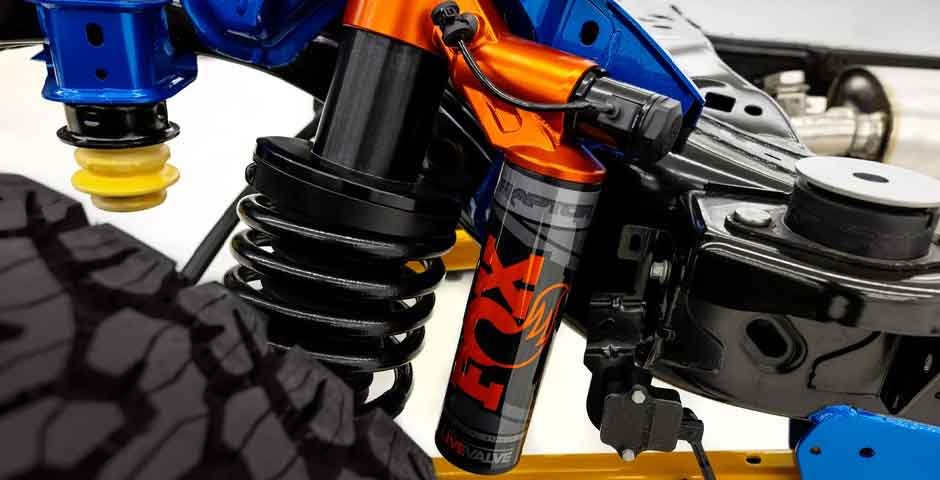Shocks play a crucial role in lifted trucks because of the altered suspension geometry and higher ground clearance. Measuring shocks correctly is vital for your truck’s optimal performance.
When altering a truck’s suspension for a lift, choosing the right shocks is critical to ensure peak performance and ride quality. However, it is easier said than done.
If you are new to a lifted truck and shocks, you have landed on the right spot!
This article will walk you through the process of measuring shocks for a raised truck using tools that allow you to make informed judgments and select the best shocks for your vehicle.
Understanding Lifted Trucks and Shocks
Lifted trucks are trucks modified to raise the chassis or body off the ground. Usually, this adjustment involves elevating the suspension system and mounting bigger tires.
In general, shocks, referred to as shock absorbers or dampers, are an essential component of a truck’s suspension system. They are made to adjust how the suspension moves, soften road shocks, and make the ride more comfortable.
Selecting the Right Shocks for Your Lifted Truck
While ensuring proper shock selection for a lifted truck, it’s essential to consider the following factors:
Lift Height
Different lift heights require shocks with specific extended and compressed lengths to maintain proper suspension travel.
Suspension Travel
The shocks should be capable of handling the extended travel without bottoming out or topping out.
Damping Characteristics
The shocks should provide appropriate damping characteristics to match the truck’s weight, driving style, and terrain conditions.
Load Capacity
Suppose the lifted truck frequently carries heavy loads or tows trailers. In that case, the shocks should have a sufficient load-carrying capacity to handle the additional weight.
Off-Road Capabilities
Choosing shocks specifically designed for off-road use is beneficial if you intend to use the truck for off-roading.
Tools and Equipment for Measuring Shocks
You will need a few tools and equipment to measure shocks for a lifted truck. Here are the essential items you will require:
Tape Measure
A tape measure is necessary to determine the lift height for measuring the distance between various points on your truck, such as the wheel hub and the fender or body.
Jack and Stands
You’ll need a jack to raise the truck and support it securely on jack stands. This allows you to access the suspension and accurately measure the extended and compressed lengths of the shocks.
Wrenches and Sockets
Nuts and bolts are required to secure the shocks, so you’ll need the appropriate wrenches and sockets to remove and install them.
Torque Wrench
A torque wrench ensures you achieve the proper torque, which is crucial for your vehicle’s safety and optimal performance.
Pen and Paper or a Digital Device
You can use a pen and paper or a digital device to note down the relevant measurements or specifications.
Safety Equipment
Wear appropriate safety gear, such as gloves and safety glasses, to protect yourself from potential hazards.
Step-by-Step Guide to Measuring Shocks for a Lifted Truck
Here’s a step-by-step guide to help you measure shocks for a lifted truck:
Step#1: Determine the Lift Height
Measure the distance between the center of the wheel hub and the fender or body of the truck. This measurement will give you the lift height of your truck. For this, you will need to jack up your lifted truck. Click here to find out How to Jack Up A Lifted Truck.
Step#2: Research Compatible Shock Measurements
Check the specifications of your lifted truck or consult the manufacturer to find out the recommended shock measurements for your specific lift height.
Step#3: Measure Extended and Compressed Lengths
For Extended Length: With the truck on level ground and the suspension at full extension, measure the length between the mounting points of the shock absorber.
For Compressed Length: Measure the distance between the mounting points with the suspension fully compressed.
Step#4: Choose Appropriate Shocks
Compare the measurements you obtained in Step 3 with the recommended shock measurements provided by the manufacturer. Select shocks that closely match your lift height’s extended and compressed lengths.
Tips and Best Practices for Measuring Shocks
– When measuring the extended and compressed lengths of the shocks, ensure that the truck is on a level surface.
– Take into consideration the suspension components when selecting and measuring shocks.
– Determine how you plan to use your lifted truck. The intended use will impact the type of shocks you need.
Conclusion
Measuring shocks for a lifted truck is critical in maintaining optimal suspension performance, ride comfort, and safety. By acknowledging the information and following the step-by-step guide outlined in this article, you can confidently measure shocks and select the appropriate ones for your lifted truck.
Remember to consider the lift height, recommended shock measurements, load capacity, damping characteristics, and any other factors specific to your truck’s usage. Always consult the manufacturer’s recommendations or seek professional assistance when in doubt.






